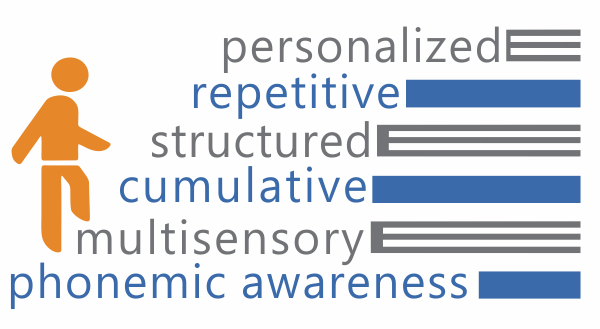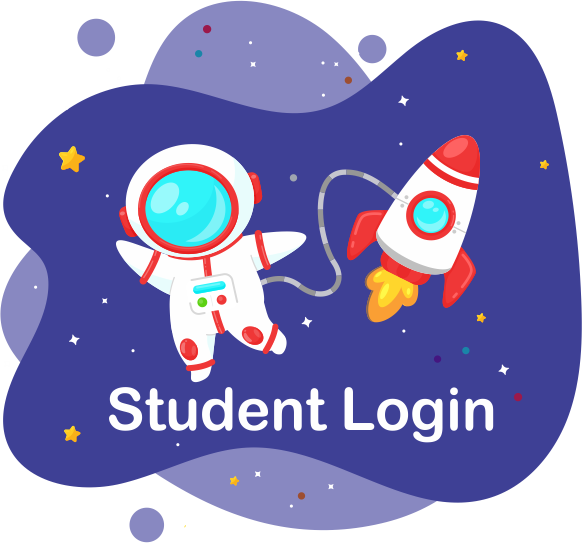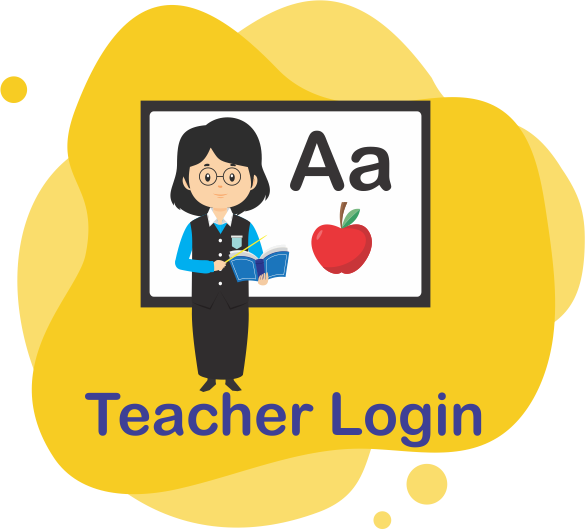The Orton-Gillingham Approach for Dyslexia

What is the Orton-Gillingham Approach for Dyslexia?
The Orton-Gillingham (OG) approach originated from a neuropsychiatrist and pathologist, Samuel Orton, and an educator
and psychologist, Anna Gillingham. The two worked together in the early 1900's to create an effective way to teach dyslexic children
how to read. The OG approach is intensive, sequential and phonics based, also using multisensory applications,
to help reinforce the sounds and rules. By the 1930's their approach was used in many small special education classes and one-on-one tutoring.
Their method is widely used today in various forms and is still just as effective. Today, the approach is often called Structured Literacy, and
is included in the science of reading.
Structured Literacy, or the Orton-Gillingham approach, is supported by scientific research to be the most effective method to teach dyslexic individuals to read.
How Non-Dyslexic Children Learn to Read
Most children today* are taught a combination of phonics along with whole language, which is sufficient for most.
These children learn to read by initially learning the sounds of the letters, learning word families and memorizing high frequency
words. When reading, they use these tools to decode words. If faced with a word they don’t know, the child is able to identify the
word's components and translate it into something recognizable. To the parent, it seems like they just “pick it up” as they read.
This is not the case for a dyslexic child.
* Currently, many schools are adopting the science of reading to teach reading (see below for more information).

How Dyslexic Children Learn to Read
Dyslexia is a language-based disorder, therefore, people with dyslexia must be taught phoneme and morphological awareness. This means they must learn all the sounds and how the sounds are put together to form words. They must also learn all of the spelling rules as well as the exceptions, which requires an intensive phonics program, unlike what is usually offered in mainstream schools. Since those with dyslexia often have a poor memory where language is concerned, this should be done with constant repetition for reinforcement as well as utilizing as many multisensory implementations as possible. The program should also be flexible so that it can be personalized to the student when needed.

An Orton-Gillingham based program should be:
Explicit in Instruction - Concepts must be clearly explained with
guidance and feedback from the instructor, and in no way should the student be expected
to discover concepts on his or her own.
Systematic and Cumulative - Concepts must be taught systematically and must build on prior concepts
already taught. The skills should be taught from the simplest to the most
difficult. This should be well planned and include review.
Multisensory - When more than one sense is used, the likelihood of learning increases. This is especially true for those with learning differences, such
as dyslexia. Students should use their ears to listen to write, their eyes to see to read, and their hands to manipulate phonics tools,
such as letter tiles, sound cards, phonics games, etc. This multisensory approach will help the brain make connections and strengthen memory. Since a Structured Literacy program
contains many sounds and rules, there's a lot to commit to memory, and the more avenues used, the better.
Responsive - The instructor should monitor the student as he or she progresses through the program to make the necessary adjustments. For example, the lessons may
need to be done at a slower pace or in a different manner. Diagnostics should also be done to track the student's progress.
Learn More About Our Reading Programs for Your Student's Age!
The Orton-Gillingham Approach & The Science of Reading
What is The Science of Reading?
The science of reading refers to the multidisciplinary field that investigated (and still investigates) how reading works,
how it is acquired, and how it can be improved. It encompasses research from various professions, including psychology,
linguistics, neuroscience, and special education.
The science of reading seeks to understand the cognitive processes involved in reading, such as word recognition,
comprehension, and fluency. Researchers examined how readers decode written words, construct meaning from text,
and make connections between prior knowledge and new information.
- Phonemic Awareness - Phonemic awareness is considered a precursor to phonics instruction. It is an auditory skill that focuses on the sounds of spoken language and does not involve written text. Phonemic awareness refers to the ability to identify, manipulate, and discriminate individual phonemes (the smallest units of sound) in spoken words. To foster phonemic awareness, have the student rhyme words, have the student verbally identify sounds is simple words, such as "cat", "math", "boil", etc. Say three separate sounds, and have the student put them together to identify the word.
- Phonics - Phonics is the understanding of the relationship between phonemes (sounds) and graphemes (letters or groups of letters) in written language. It involves connecting the sounds of spoken language to the corresponding written symbols. Phonics includes: short vowel sounds, long vowel sounds, consonant sounds, consonant blends, and diagraphs & diphthongs, such as /th/ and, /oi/.
- Vocabulary - Understanding and acquiring a broad vocabulary is crucial for reading comprehension. Research explores effective strategies for vocabulary instruction and how vocabulary knowledge contributes to reading comprehension.
- Fluency - Fluency refers to the ability to read quickly, accurately, and with appropriate expression. It involves automatic word recognition and smooth, efficient reading. Studies investigate the factors that contribute to fluent reading and interventions to enhance fluency.
- Comprehension - Comprehension involves constructing meaning from text, making inferences, and connecting ideas. Researchers examine the cognitive processes involved in comprehension, the role of background knowledge, text structures, and the impact of instruction on comprehension skills.
Orton-Gillingham & The Science of Reading
The Orton-Gillingham approach and the science of reading are closely related and share common principles and goals.
The Orton-Gillingham approach is an instructional approach designed to support individuals with dyslexia and other
reading difficulties, focusing on systematic, explicit, and multisensory instruction.
The science of reading seeks to understand the cognitive processes involved in reading, such as word recognition,
comprehension, and fluency. Researchers examined how readers decode written words, construct meaning from text,
and make connections between prior knowledge and new information.
- Phonemic Awareness and Phonics - Both the Orton-Gillingham approach and the science of reading emphasize the importance of explicit instruction in phonemic awareness and phonics—the understanding of the relationship between sounds and letters.
- Systematic and Sequential Instruction - The Orton-Gillingham approach and the science of reading advocate for systematic and sequential instruction, starting with foundational skills and progressing to more complex reading and language skills.
- Multisensory Approach - The Orton-Gillingham approach utilizes multisensory techniques to engage multiple senses in learning, such as incorporating visual, auditory, and kinesthetic/tactile elements. The science of reading recognizes the benefits of multisensory instruction for enhancing learning and memory.
- Structured Literacy - Both the Orton-Gillingham approach and the science of reading promote structured literacy instruction, which focuses on teaching the structure of language, including phonology, orthography, morphology, and syntax.
- Individualized Instruction - The Orton-Gillingham approach emphasizes individualized instruction tailored to the needs of the learner. The science of reading recognizes the importance of targeted interventions and differentiated instruction to support learners with diverse needs.
Learn More About Our Reading Programs for Your Student's Age!











